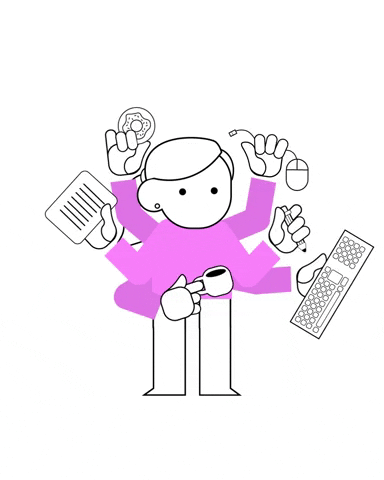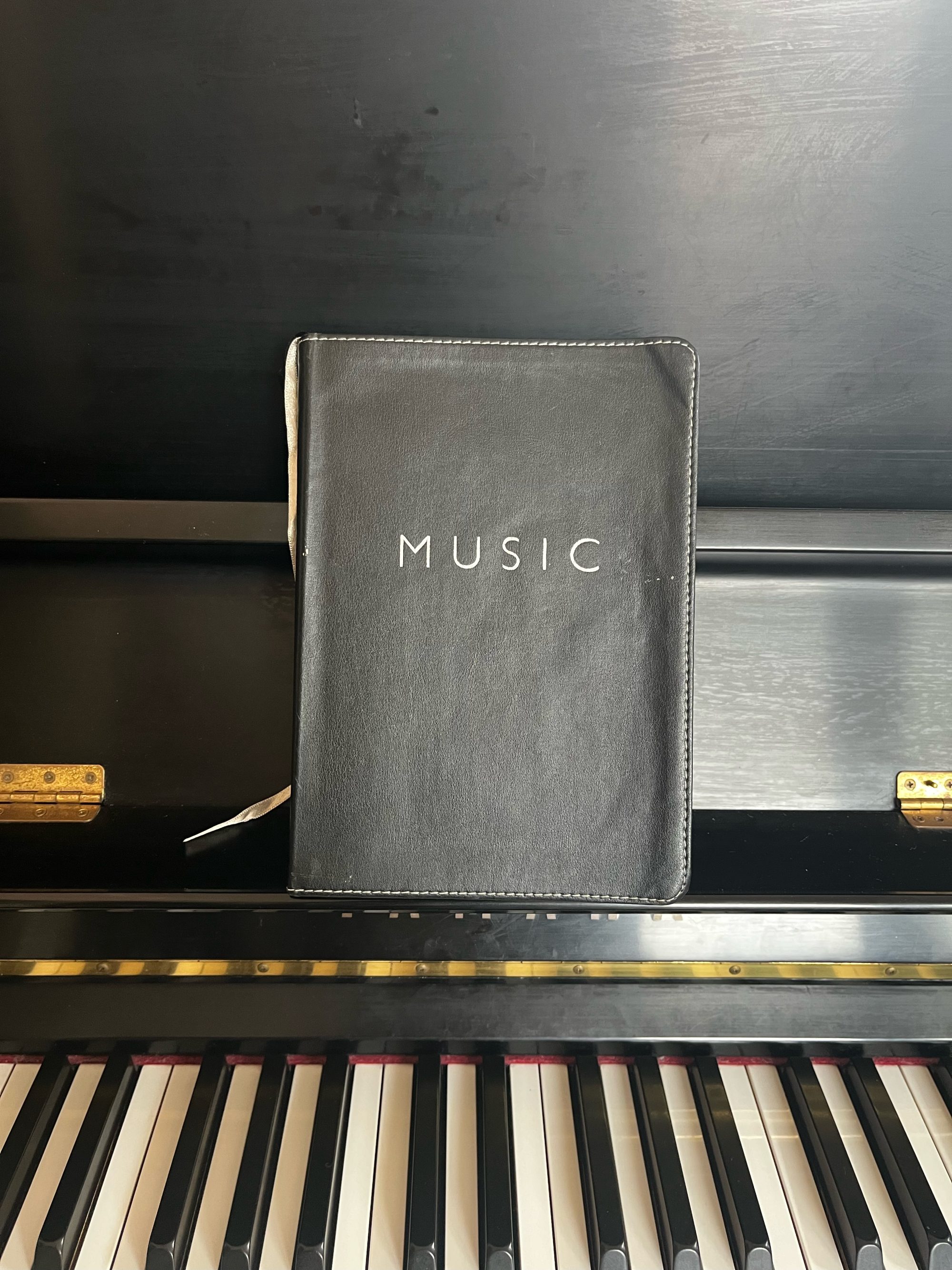Being a musician and a new mom has come with its own set of challenges. Balancing time for my baby, who requires a lot of attention, along with my personal responsibilities and self-care, has been a significant learning curve. I often struggle to find time to practice, as my new priorities have shifted towards caring for my child. This has forced me to find creative ways to continue learning, even when I’m not at my instrument. I rely on motivational strategies, mental exercises, and note-taking to stay engaged throughout the week. Since moving to Los Angeles, I’ve been teaching more adults, particularly women who face similar challenges and are eager to learn. Here are some tips and tricks I’ve gathered from my personal journey and teaching experiences.

Practice no matter how small the time.
What if you only have 5-10 minutes in a day? Sometimes, that’s all you can manage. I’ve found that no matter how little time you have, every bit counts. The key is to engage your mind and focus on even one small task. For example, if you’re working on a piece of music, playing just the first five bars—even sight-reading—sets you on a path. If you find a few more minutes the next day, you can continue with the same section or move further. In between practice sessions, your mind continues to process and internalize what you’ve been working on. You train yourself to hear and think about the music, and you validate that learning by returning to it the next day. Even a little bit of effort helps you progress.
Now, imagine if you did nothing for an entire week, but instead, you found 5 or 10 minutes each day to sit down at the piano. In those short sessions, you could have practiced a few measures of a piece—better than doing nothing at all. I used to think I needed a few hours every day to practice, and I always made room for it. But now, that’s much harder to do. So, I focus on a small concept or section I want to work on and make sure to spend even just a few minutes at the piano, whenever I can.
Keep a practice journal or notepad

This journal can be as deep or as simple or complex as you’d like it. Since this article is about having little to little time to practice, let’s keep it simple. Here’s an example of a practice journal entry:
8.1.2020
- Scales Db minor 2 octaves
- Bach invention first 4 measures RH
- Listened to Bach and pop songs I’d like to play
8.2.2020
- Bach invention first 4 measures LH
- Work on fingering (slower)
- What a wonderful world. Listened. Looked up sheet music
8.3.2020
- Bach RH invention Measure 2.
Here’s a simple example of a 3-day practice log. It’s mostly a list of what I worked on and what I need to focus on next. Keeping a log like this helps capture your thoughts and progress, especially when you can’t spend long periods at the piano. With so much happening in a day, jotting down what you’ve just practiced can make future sessions more focused and efficient.
You can also include activities that don’t require sitting at the piano, like listening to songs or planning pieces you want to learn. This makes your goals more concrete and helps clarify what you want to achieve. Remember, learning music is a marathon, not a sprint. Progress may feel slow, so be patient with yourself.
Even listening to music while doing other chores can be beneficial. Ideally, you’d sit in a quiet room with good speakers or headphones to fully immerse yourself, but if time is limited, listening while multitasking might be your best option. Sometimes, I play a song every day, even during busy weeks. This repetition helps embed the music in your mind, like a catchy tune that gets stuck in your head, which can be incredibly useful when learning a new piece.
Practicing away from the piano
I find myself doing this a lot more since having my baby. When I’m working on a specific song, lick, riff, motif, or progression, I play mental games to keep progressing. One of my favorites is to imagine myself playing the piece with the correct fingering. I first visualize the piano keys and then imagine my hands playing the notes. This technique might take some time to master, but the key is to clearly see the keyboard in your mind first, then picture your hands moving over it.
Even starting with a simple five-note scale is helpful. If you can visualize one finger pressing one key with clarity, it becomes easier to play that note in real life. When you finally sit at the piano, you already know what to expect. This method also aids in memorization—if you can see it clearly in your mind, you’re much more likely to be able to play it.
Listen
Most of our inspiration as musicians comes from listening. When we hear an incredible piece or feel continually inspired, we naturally want to emulate that sound. The journey to do so takes time, and I like to think of it as needing more input than output. What can we express musically if we don’t have anything inside to draw from? Ideally, you should listen to the piece you’re working on more often than you actually play it. This is easy to do, especially today, with music readily accessible through Spotify, Alexa, YouTube, and other platforms.
We should always be listening to music if we want to play it. When you find a piece that moves you, try to listen to it at least once a day, even if you think you already know it. Each time, you might notice something new: What is the bass doing? What is the melody like? Where does the bridge happen? Does the tempo change? Are there different versions? There’s a difference between simply hearing and actively listening.
Of course, it can be hard to listen deeply if you’re multitasking, but having the song of interest playing in the background every day keeps it fresh in your mind. Sometimes, you might catch a moment of inspiration. I also believe that we can learn through a kind of musical “osmosis.” A song, especially one you love, can echo in your mind, even waking you up in the middle of the night.

Have you ever noticed a song that gets stuck in your head, even if you never intended to learn it? Maybe it’s a tune your kids love, something from the radio, or a jingle from a commercial. Without any conscious effort, you know the lyrics and melody. This happens because catchy songs tend to stick with us after just a few listens. Imagine using this same phenomenon with a piece you want to learn—listening to it every day can have the same effect as those tunes that play on repeat in your mind.
Watching or listen to videos or podcasts about music
This just helps stimulate your mind to think about music more often. Sometimes a lesson or just the songs we work on are not enough to keep you motivated. I love listening to podcasts on long car rides, when I’m running, or cooking. Sometimes I listen to musicians who I admire in interviews. Documentaries are great too. Recently I’ve been listening to openstudio on youtube and spotify. They are not too long and I get some good pointers listening to them.
Another way to keep me going is finding musicians on instagram. Since the pandemic I’ve found a whole set of musicians I love listening to and follow on certain platforms now. Sometimes these musicians would post little tidbits on how to play a lick or phrase and that helps motivate me to play more as well. If you’re not a big social media person, finding musicians or people that talk about music on these platforms may not be easy. I find youtube or google can sometimes give you similar artists to follow or videos to watch.
Conclusion:
These are just a few tricks I’ve learned that have helped me stay motivated and committed to learning and growing. Even doing just one of these each day can keep you engaged, preventing the feeling of having to start over. If you want to play piano, keeping your mind active and focused on music can inspire creative ways to practice and make time for the piano.
Be patient with yourself. Learning piano takes time and practice, but it’s definitely achievable. Some days and weeks will feel more productive than others, but the key is to stay committed to the journey. Remember, music is like a language. Mastering all the nuances of, say, Taiwanese, would require time, immersion, and patience—just as you’d need to spend months or even years in Taiwan to become fluent and comfortable. There is also an entire culture surrounding any language, much like there is for every genre of music. The subtleties, the feel, the rhythms, and the phrases all come together to create its unique expression.
Think of music as a language that takes time to learn. With small, consistent efforts every day, you’ll gradually move closer to where you want to be.
